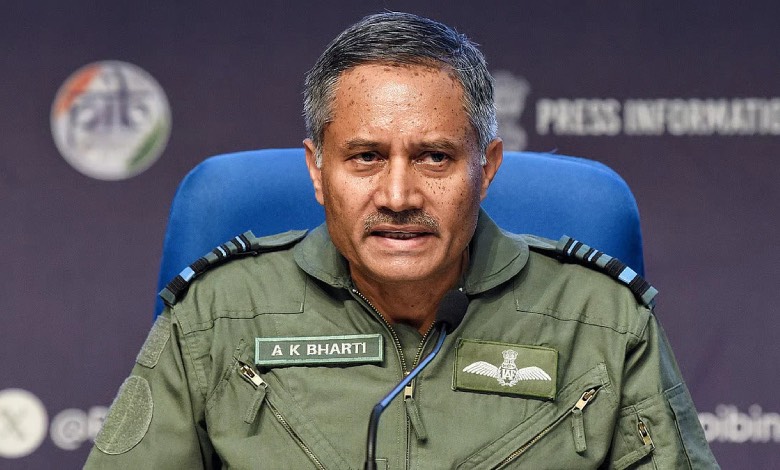
New Delhi: The Indian Air Force has refuted claims circulating on social media that it targeted Pakistan’s nuclear facility located at Kirana Hills in the Sargodha district. Air Marshal AK Bharti, Director General of Air Operations, clarified during a press briefing on Monday that the Indian forces did not strike the location in question.
“Thank you for telling us that Kirana Hills houses some nuclear installation. We did not know about it. And we have not hit Kirana Hills, whatever is there,” Bharti said, addressing the speculations.
The clarification follows online reports suggesting India attacked the Mushaf Airbase, allegedly linked to nuclear storage beneath Kirana Hills, using advanced munitions. The Kirana Hills, known locally as the “Black Mountains,” is a rocky region controlled by Pakistan’s Ministry of Defence, lying between Rabwah and Sargodha.
Bharti emphasized the readiness of Indian forces, highlighting the effective use of indigenous systems during recent operations. “Another highlight was the stellar performance of indigenous air defence weapons like the Akash system,” he noted. He also confirmed that all military installations and systems remain fully operational and ready for deployment.
During a joint press conference on Sunday, Air Marshal Bharti presented imagery showing significant damage to Pakistani military infrastructure, including radars and airfields, inflicted during retaliatory strikes by India under Operation Sindoor.
The operation was launched on May 7 in response to the April 22 terrorist attack in Pahalgam, Jammu and Kashmir, which claimed 26 lives, mostly tourists. The Indian counter-offensive came after Pakistan reportedly attempted to hit 26 Indian sites, including air bases in Udhampur, Pathankot, and Adampur, on the night of May 9–10.
Targets Across Pakistan and PoK
As part of Operation Sindoor, the IAF conducted precision strikes on nine terrorist hideouts across Pakistan and Pakistan-occupied Kashmir (PoK). The targets were linked to banned outfits such as Jaish-e-Mohammed (JeM), Lashkar-e-Taiba (LeT), and Hizbul Mujahideen.
Among the specific sites struck were:
- Jaish-e-Mohammed: Markaz Subhan Allah (Bahawalpur), Sarjal (Tehra Kalan), Markaz Abbas (Kotli), and Syedna Bilal camp (Muzaffarabad)
- Lashkar-e-Taiba: Markaz Taiba (Murdike), Markaz Ahle Hadith (Barnala), and Shwawai Nalla camp (Muzaffarabad)
- Hizbul Mujahideen: Makaz Raheel Shahid (Kotli) and Mehmoona Joya (Sialkot)
Four of the nine locations were situated within Pakistan’s geographical boundaries, while five were in PoK.
Ceasefire Agreement Announced
Following the escalation, India and Pakistan announced a mutual ceasefire across all domains land, air, and sea effective immediately. The agreement reportedly came after US-mediated discussions, with then-President Donald Trump confirming a “full and immediate” cessation of hostilities.
As per The Mint, Indian military leadership continues to liaise with international counterparts to prevent further escalation, especially in the aftermath of the Pahalgam attack. The Directorate General of Military Operations (DGMO) remains responsible for overseeing such combat and counter-terror efforts.




